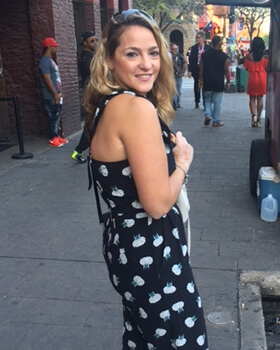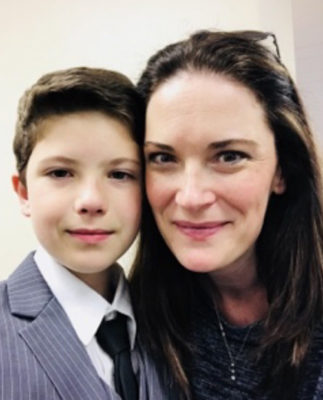Molly Hops to DOC

Molly was walking on the grass, stepped into a hole and fell, injuring her ankle. Her mother, a nurse, advised her to go to the orthopedic urgent care rather than the ER. Molly came to the convenient DOC South Austin location.
She was examined, X-rayed and treated within an hour. Molly said that she was “happy to be in an environment where I was taken care of so efficiently compared to an ER.” The “personable” Dr. Pember diagnosed an ankle sprain and put her in a boot and crutches with the RICE recommendation, rest, ice, compression, and elevation.
Molly is a server and on her feet so she missed five days of work, but is a movie and TV fanatic and enjoyed her time at home, non weight-bearing, watching her favorite shows. Sometimes when on the job, Molly felt like her ankle would give way while just standing.
Dr. Pember noticed that the ligaments are weak in her sprained ankle. Molly broke the same ankle in the 3rd grade while sledding in Connecticut. The doctor put her in a neon yellow cast. All of her friends signed the cast and she felt “cool” with the bright cast for a week. However, her third grade teacher fell on the ice a week later and broke her ankle and came to class with an ankle cast, ending the illusion of her cool cast.
About half of all people who break or sprain their ankle once experience additional ankle sprains and chronic pain. The most common cause for a persistently painful ankle is incomplete healing after an ankle break or sprain. With an ankle injury, often the connecting tissue between the bones is stretched or torn. Without thorough and complete rehabilitation, the ligament or surrounding muscles may remain weak, resulting in recurrent instability and additional ankle injuries.
The best ways to prevent ankle sprains are to maintain good muscle strength, balance and flexibility. Some other precautions will help prevent future sprains:
- Warm up before exercise and physical activity
- Pay careful attention when walking on an uneven surface
- Wear supportive shoes
Molly is wearing a supportive boot at work while healing. She has changed her footwear to provide more support and stability. She will follow DOC’s recommendations for rehabilitation in order to strengthen her ankle and prevent future ankle injuries.
For more information on the cost of care, click here.



